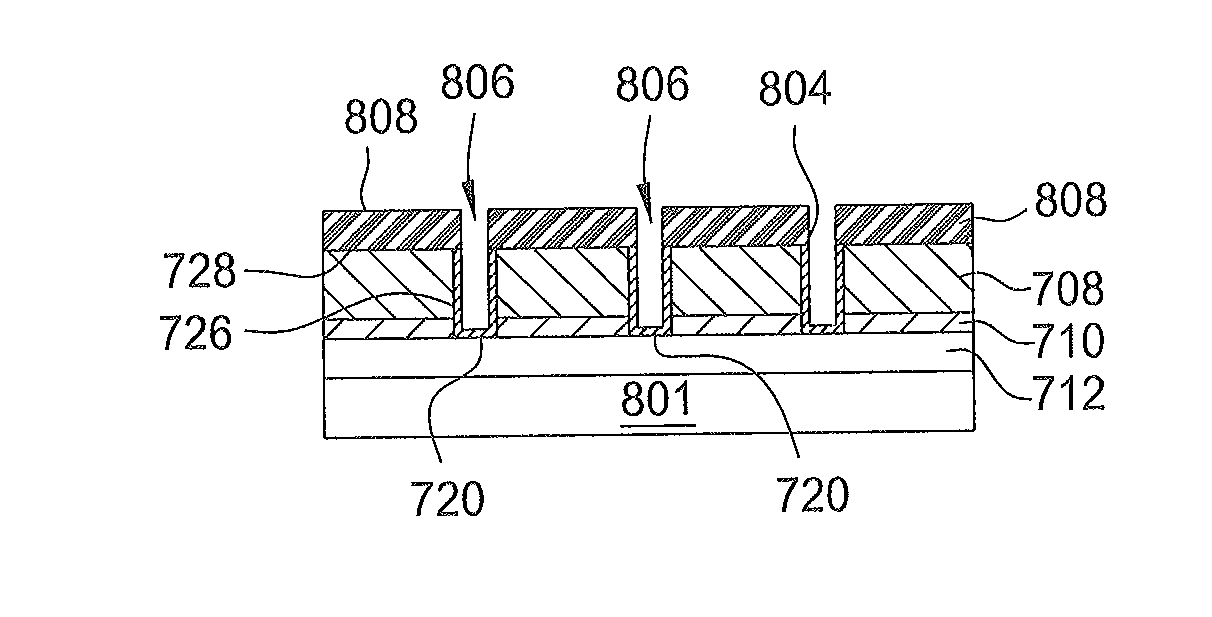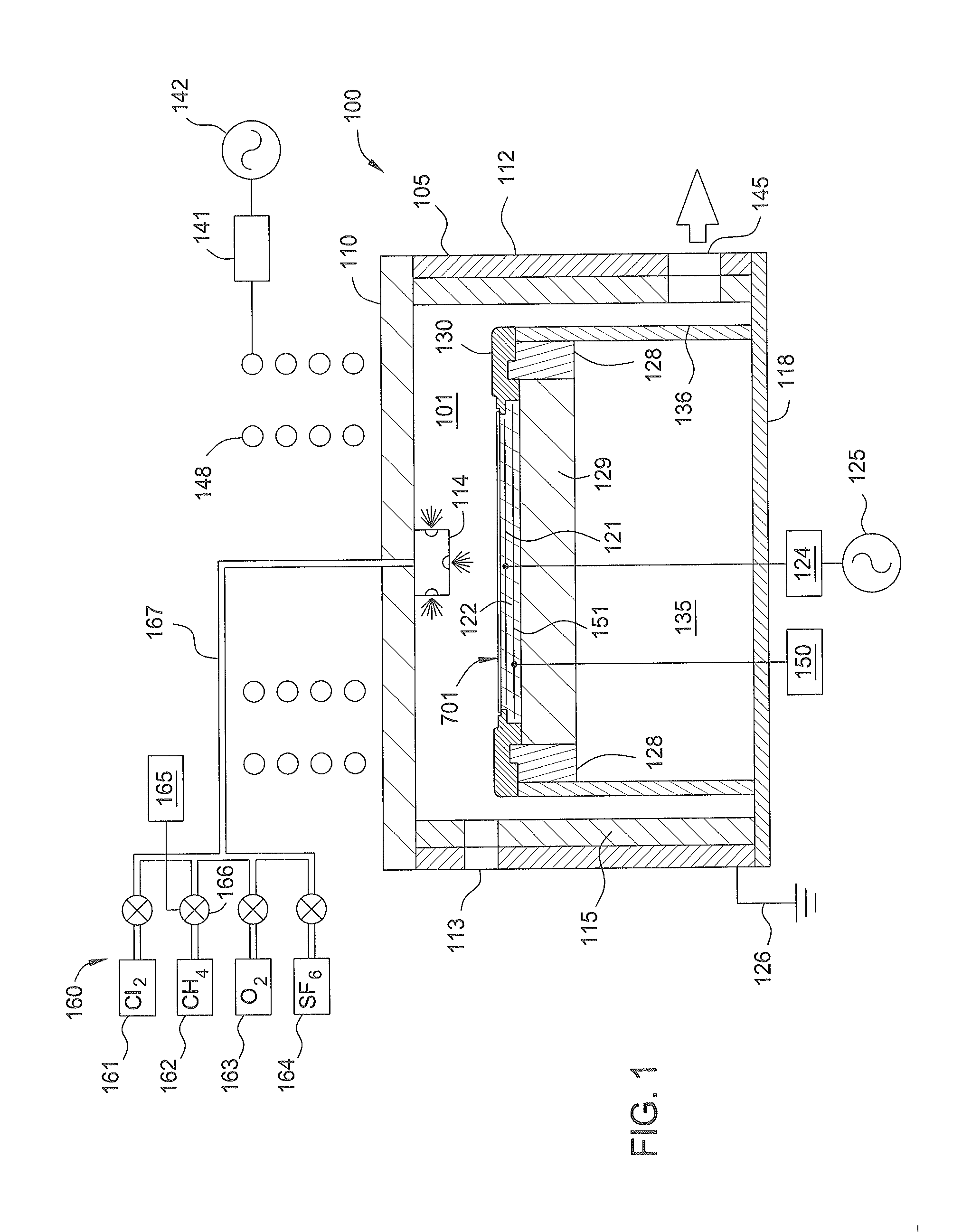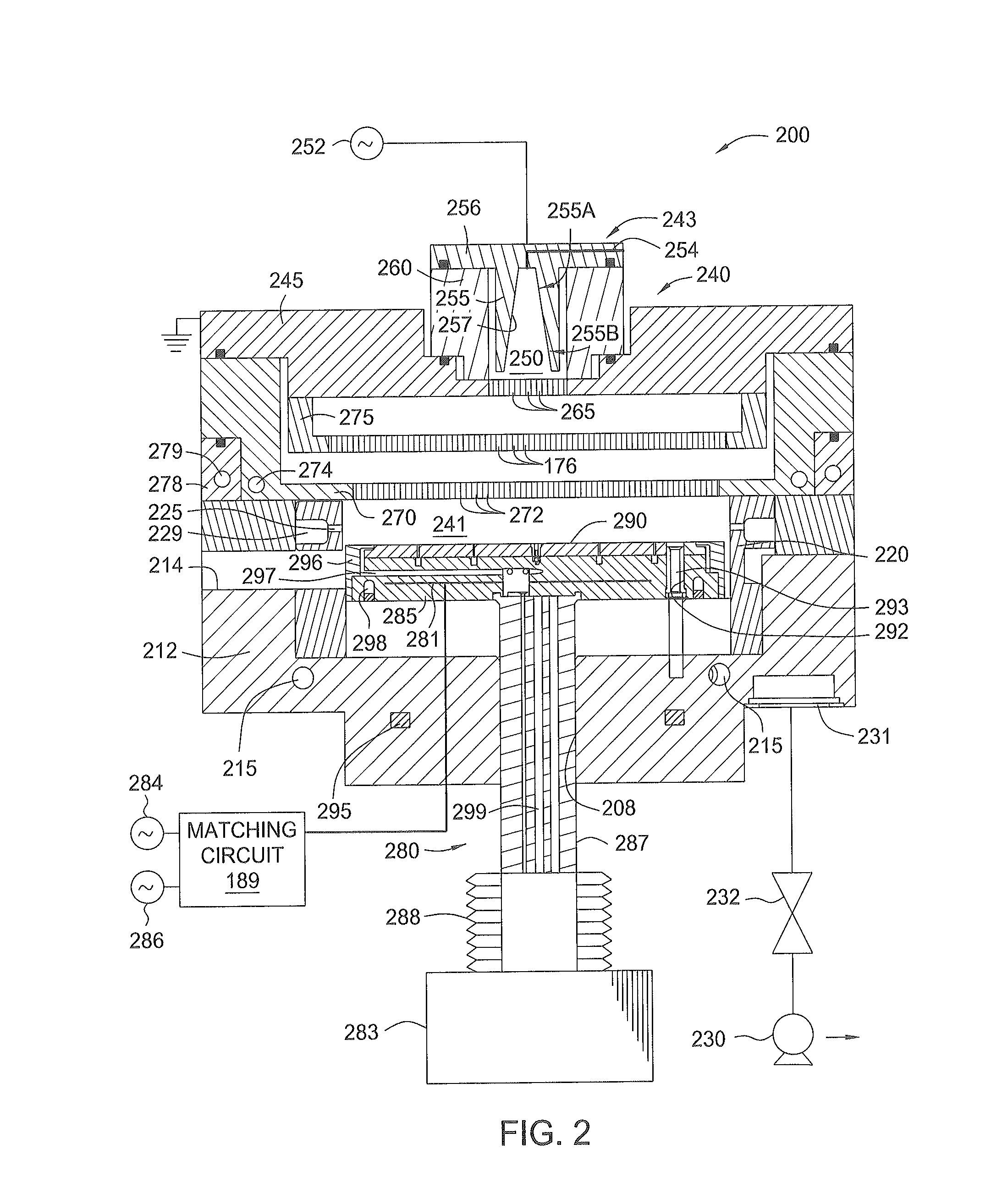Methods for forming interconnection structures in an integrated cluster system for semicondcutor applications
a technology of semiconductor and interconnection structure, which is applied in the direction of basic electric elements, electrical equipment, electric discharge tubes, etc., can solve the problems of reducing the overall performance of the integrated circuit, reducing the accuracy of pattern transfer, and increasing the difficulty of pattern transfer for the manufacture of structures with small critical dimensions and high aspect ratios
- Summary
- Abstract
- Description
- Claims
- Application Information
AI Technical Summary
Benefits of technology
Problems solved by technology
Method used
Image
Examples
Embodiment Construction
[0025]Embodiments of the present invention provide methods for forming an interconnection structure in semiconductor devices without breaking vacuum with minimum oxidation / atmosphere exposure. In one embodiment, the interconnection structure may be formed by utilizing a dry etching process to etch a metal layer and a barrier layer, and subsequently forming liner layer on the substrate without breaking vacuum. The processes for forming the interconnection structure may be all integrated and performed in a processing system, i.e., a cluster system, to deposit, form and pattern layers in a single processing system without breaking vacuum so as to reduce the likelihood of surface oxidation, contamination, thereby providing a good control of profile formation and electrical properties for semiconductor devices.
[0026]FIG. 1 is a simplified cutaway view for an exemplary etch processing chamber 100 for etching a metal layer. The exemplary etch processing chamber 100 is suitable for removing...
PUM
 Login to View More
Login to View More Abstract
Description
Claims
Application Information
 Login to View More
Login to View More - R&D
- Intellectual Property
- Life Sciences
- Materials
- Tech Scout
- Unparalleled Data Quality
- Higher Quality Content
- 60% Fewer Hallucinations
Browse by: Latest US Patents, China's latest patents, Technical Efficacy Thesaurus, Application Domain, Technology Topic, Popular Technical Reports.
© 2025 PatSnap. All rights reserved.Legal|Privacy policy|Modern Slavery Act Transparency Statement|Sitemap|About US| Contact US: help@patsnap.com



